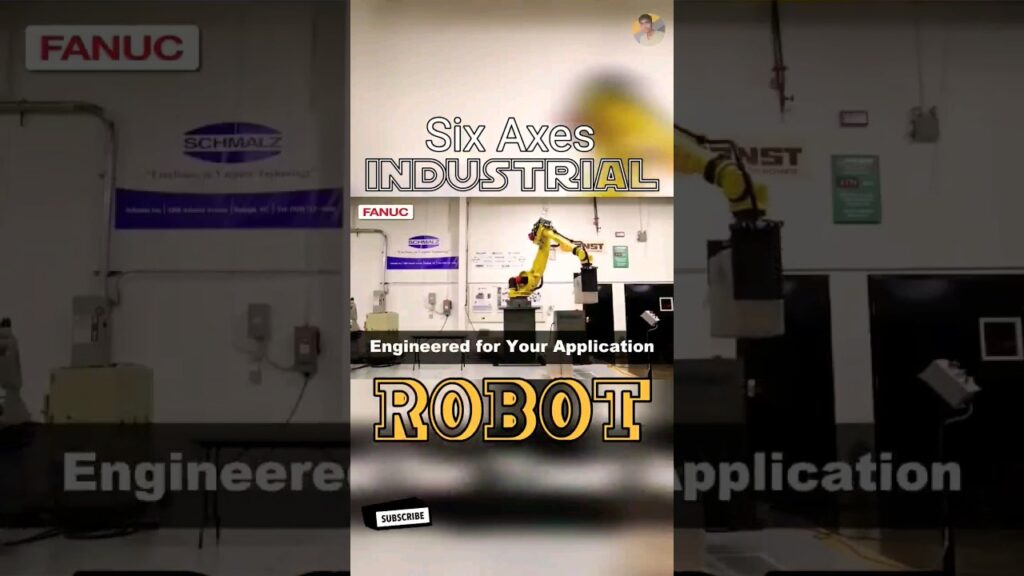Types of Industrial Robots
In the world of automation and robotics, industrial robots play a vital role in enhancing productivity and efficiency in various industries. These highly sophisticated machines are designed to perform tasks with speed, precision, and accuracy, making them an indispensable asset in manufacturing processes. Today, we will delve into the different types of industrial robots and explore their applications. So, let's dive in!
## The 6 Axes of an Industrial Robot
Before we delve into the various types of industrial robots, let's first understand the concept of "6 axes." In robotics, axes refer to the number of directions in which a robot can move. An industrial robot with 6 axes has six different joints that allow it to move in six degrees of freedom. Each axis represents a different movement, including rotation and translation, enabling the robot to reach different positions and orientations with great flexibility.
1. The first axis, also known as the "base axis," allows the robot to rotate horizontally at its base.
2. The second axis, or the "shoulder axis," enables vertical movement and rotation at the shoulder joint.
3. The third axis, the "elbow axis," allows for both vertical and horizontal movement and rotation at the elbow joint.
4. The fourth axis, known as the "wrist axis 1," offers additional movement and rotation at the wrist.
5. The fifth axis, or the "wrist axis 2," provides further flexibility by allowing rotation at the wrist joint.
6. Lastly, the sixth axis, the "wrist axis 3," facilitates rotation at the end of the robot's arm, often referred to as the "end effector."
With these six axes, industrial robots can handle complex tasks with precision and adaptability, making them suitable for a wide range of industries.
## Types of Industrial Robots
1. Cartesian Robots: Cartesian robots, also known as "gantry robots," are widely used in applications that require precise linear movement. Their design features three linear axes (X, Y, and Z) that allow for movement along orthogonal directions. These robots excel in tasks such as pick-and-place operations and assembly.
2. SCARA Robots: SCARA (Selective Compliance Assembly Robot Arm) robots are most commonly used in assembly and material-handling processes. Their unique design, with two rotary axes and one linear axis, allows them to perform tasks with high speed and accuracy. SCARA robots find applications in industries like electronics, automotive, and pharmaceuticals.
3. Articulated Robots: Articulated robots are perhaps the most recognizable and versatile robots in the industry. With their characteristic arm-like structure, they offer exceptional flexibility and mobility. These robots can perform a wide range of tasks, including welding, material handling, and painting.
4. Delta Robots: Delta robots, also known as "parallel robots," are commonly used in applications that require rapid and precise movements. They possess a unique design consisting of three elongated arms connected to a base, allowing them to achieve high speeds. This makes delta robots ideal for tasks like packaging, sorting, and food processing.
5. Collaborative Robots: Collaborative robots, or "cobots," are designed to work alongside humans safely. These robots have built-in sensors and safety features that enable humans and robots to collaborate on tasks, boosting productivity and efficiency. Cobots find applications in industries like healthcare, logistics, and electronics assembly.
6. Mobile Robots: As the name suggests, mobile robots are designed for movement and navigation in dynamic environments. Equipped with locomotion capabilities, these robots can navigate warehouses, factories, and even outdoor spaces autonomously. Mobile robots are used for material transportation, inventory management, and surveillance.
These are just a few examples of the various types of industrial robots available in the market today. Each type of robot offers unique capabilities and features, making them suitable for specific applications and industries. The advancements in robotics technology continue to push the boundaries, enabling robots to become more intelligent, adaptable, and collaborative.
In conclusion, industrial robots have revolutionized the manufacturing landscape, enabling businesses to streamline processes, boost productivity, and achieve higher levels of precision. With different types of robots available, there is no doubt that automation will continue to shape the future of industries worldwide. Whether it is a Cartesian robot, SCARA robot, or a collaborative robot, these machines are paving the way for a more efficient and automated future.
Remember, in the world of automation, the possibilities are endless, and industrial robots are at the forefront of this transformative journey.
*Note: This article is intended for informational purposes only and does not endorse any specific robot manufacturer or brand.*
Industrial Robot
"Exploring the 6 Axes of an Industrial Robot: Understanding Types and Applications in Automation"


